How do you get customers to buy from your ecommerce store?
With more ways than ever to interact with customers, it can be hard to tell which methods make a real impact on product research and purchase.
ActiveCampaign surveyed over 500 consumers to understand what makes people buy things online.
We wanted to understand:
- What makes people want to learn more about a product? How do you get people interested?
- Why do people eventually purchase a product?
- What makes people purchase from a brand more than once? How do you keep them coming back for more?
In this article, we’ll cover the research findings and real-world examples from industry experts.
Keep reading to learn:
- How to get customers interested in your products
- How to recover abandoned carts
- How to keep customers coming back after their first purchase
How to get customers interested in your products
What makes shoppers begin to research your products or brand?
Finch Grace runs Scofflaw Nail Varnish, an ecommerce store selling limited-release nail polish. “People nearly always discover me through social — specifically through Instagram and Facebook,” explains Finch.
Most shoppers discover Scofflaw in 3 ways, which Finch calls her “steps to engagement:”
- Paid social media ads
- Influencer marketing
- Social proof
1. Paid social media ads
Social media ads can help increase visibility and brand awareness — which, in turn, leads to website visits and email list opt-ins.
Finch uses promoted ads on Facebook and Instagram to spark people’s interest in her brand and encourage them to subscribe to her email list. The ads feature Scofflaw’s brand identity and aesthetic through product photos and graphics.



Some examples of Scofflaw Nail Varnish’s Instagram ads
2. Influencer marketing
In influencer marketing, a brand partners with a social media influencer for brand and product mentions or promotions. The brand then pays the influencer or gives them free products.
Influencer marketing lets you scale the power of word-of-mouth to reach even more potential customers. Working with influencers gives you access to an already-engaged audience of ideal customers — and encourages them to trust your brand.
Finch reaches out to niche influencers whose follower counts range from the thousands to over 100,000. These influencers are tastemakers and aspirational artists — aka Scofflaw’s target market. Working with a variety of influencers lets Finch expand her reach and influence.
Finch chooses a wide range of influencers to represent her customers: “I have people of different ages and different skin tones. It’s very important that everyone feels included.”
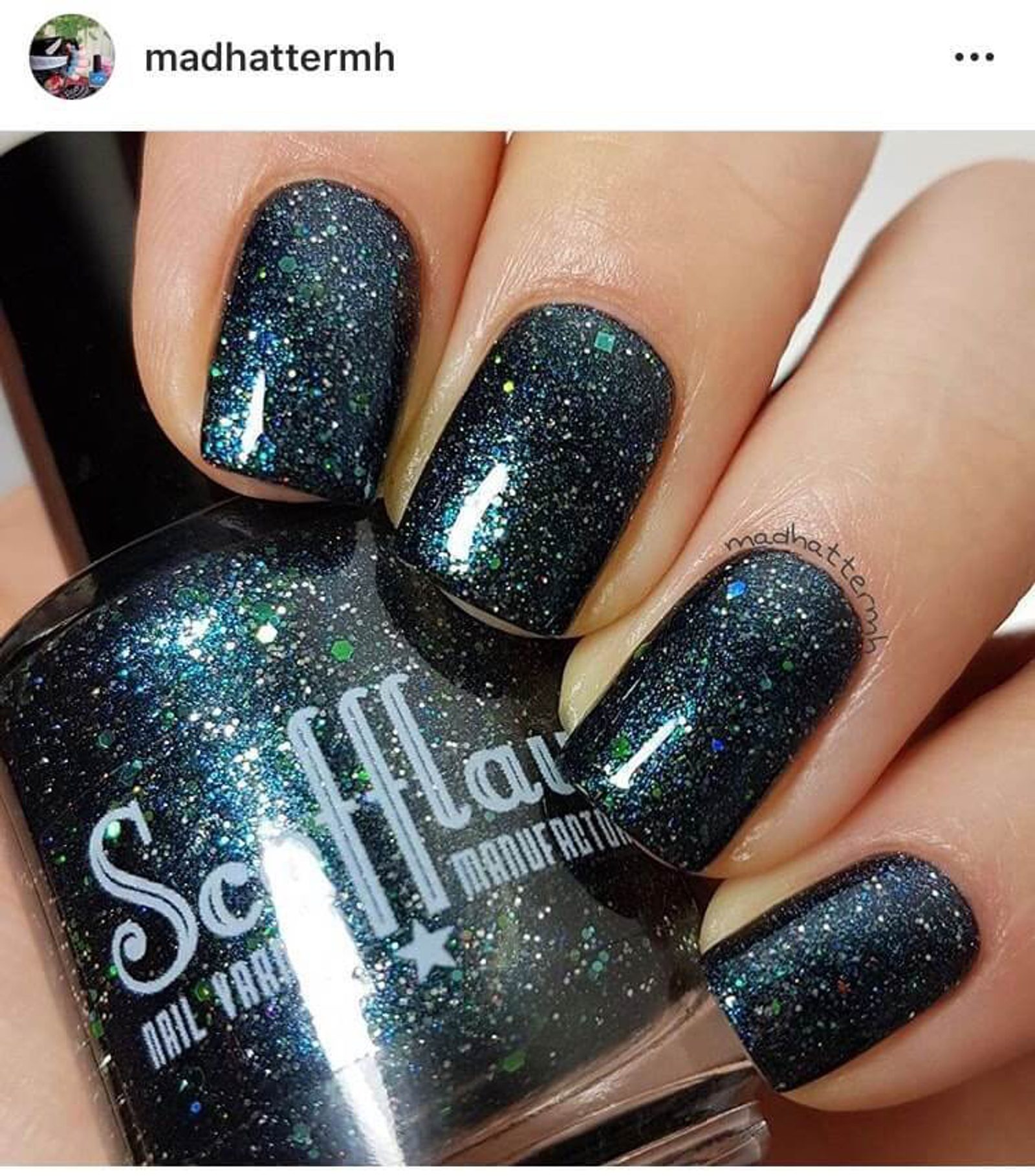
She also reaches out to aspiring influencers that may only have 2,000 or 3,000 followers to build a relationship early on. “And six years later — because I've been doing this almost 7 years — those influencers have 100,000 followers. And they always have time for me.”
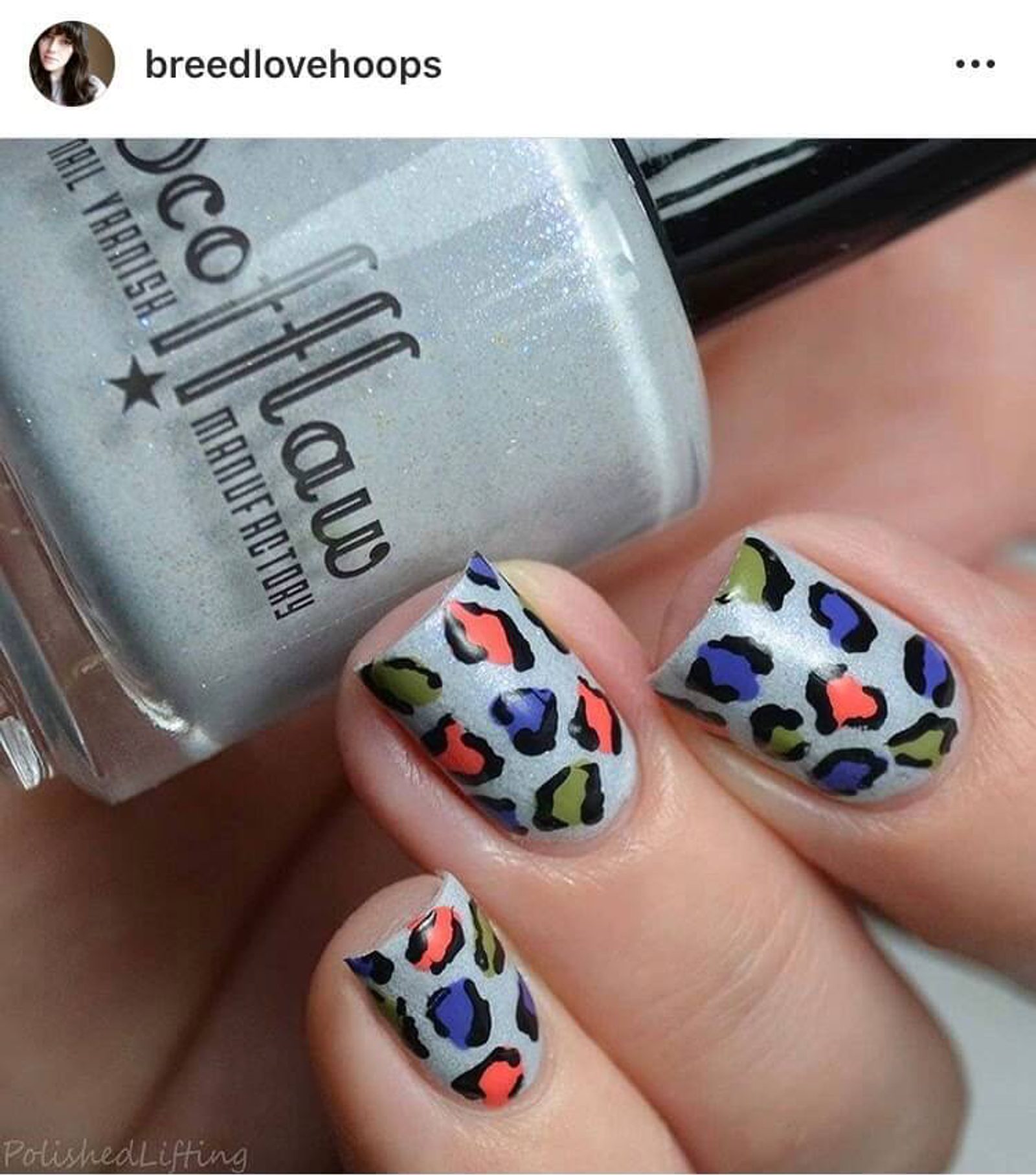

Instagram influencer posts promoting Scofflaw Nail Varnish products
3. Social proof
Social proof is the holy grail of social media marketing: The customer becomes the marketer.
- According to Nielsen, 92% of consumers say that they’re more likely to trust personal recommendations over ads
- Millennials are 115% more influenced by word of mouth than traditional advertising
As a marketer, you no longer have control over your brand narrative. Customers choose whether or not they tell your story, and they decide if (and how) they market your product.
The end goal: The average customer promotes you to their networks — without you asking them to do so.
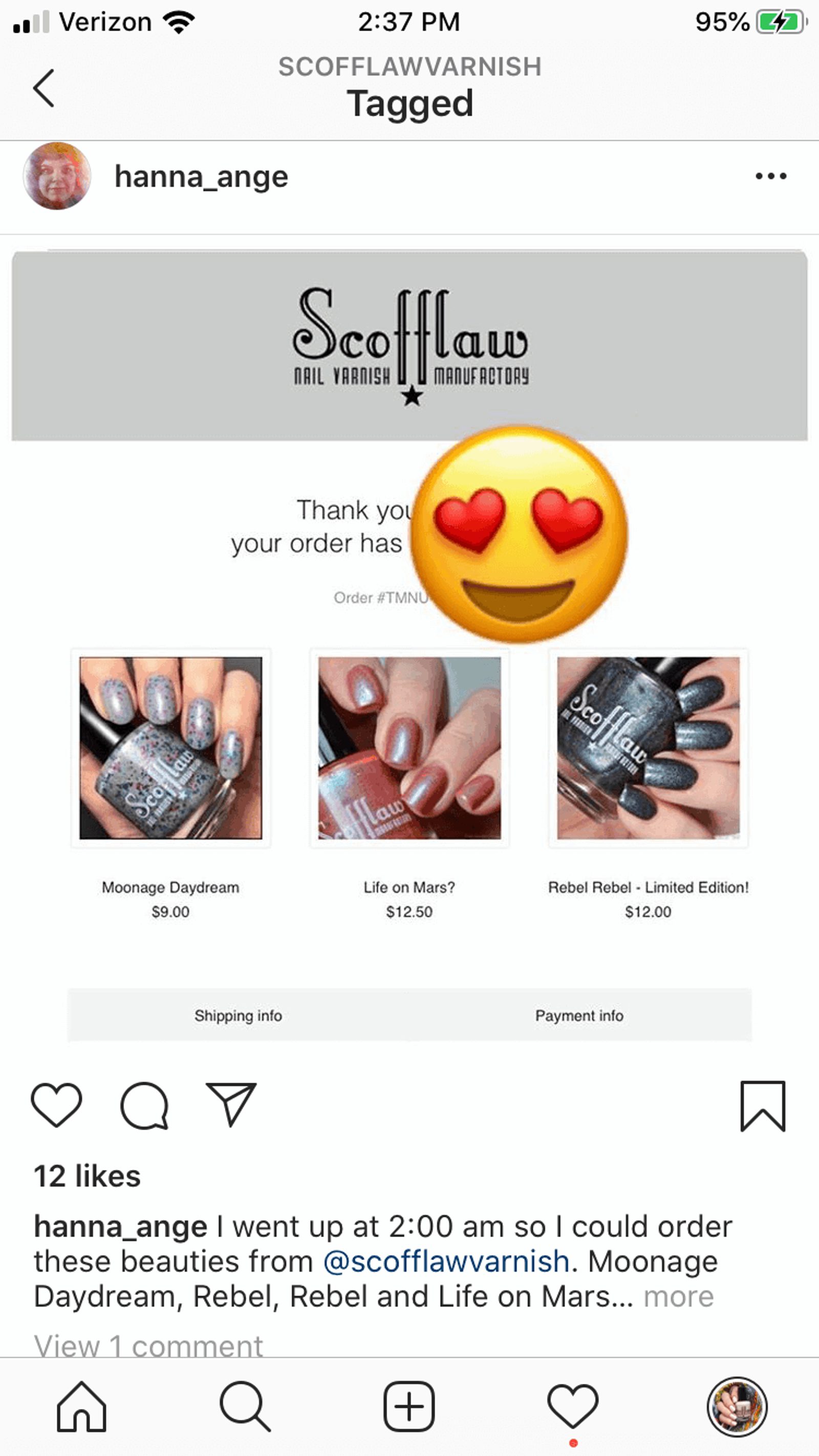
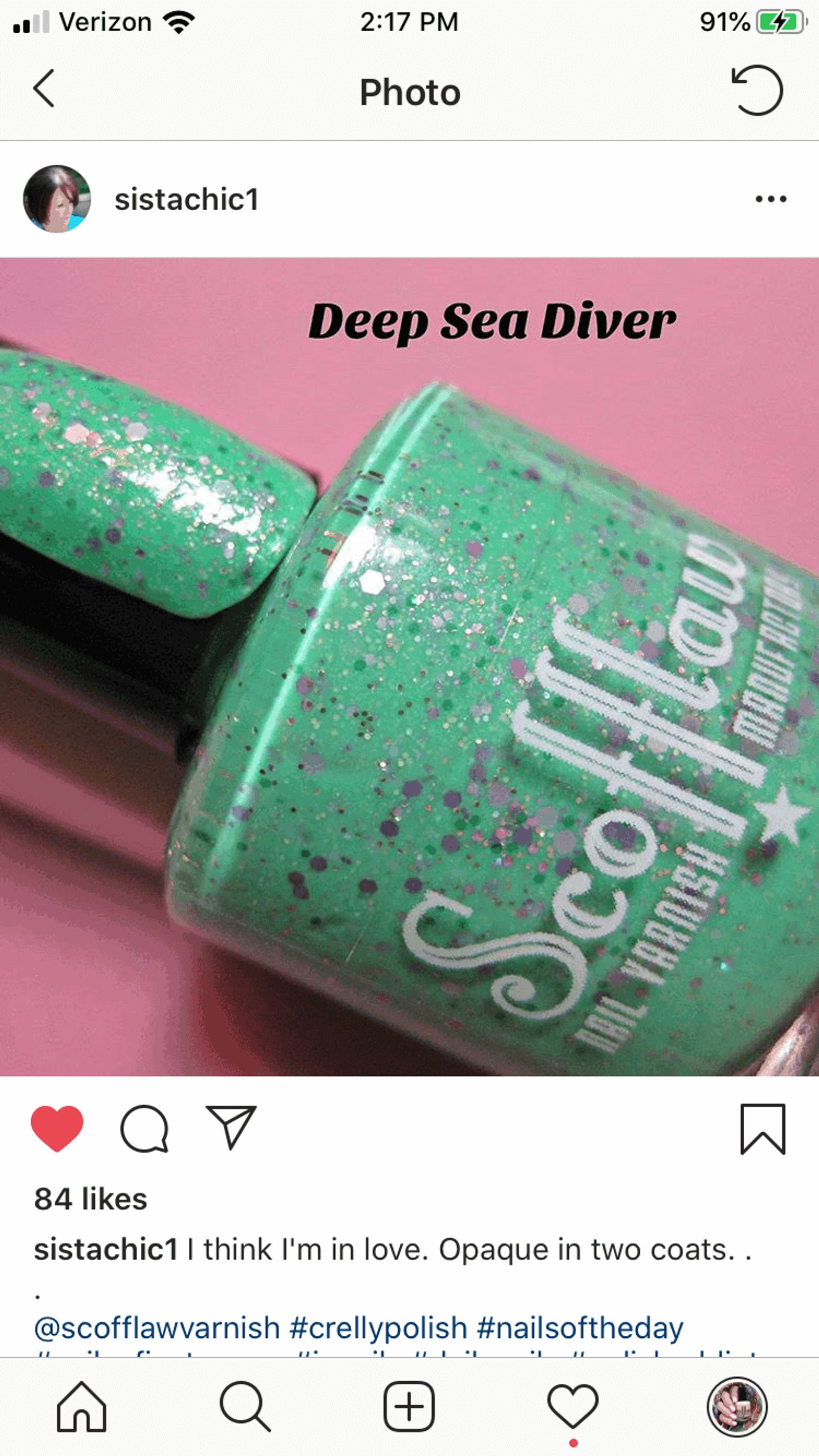
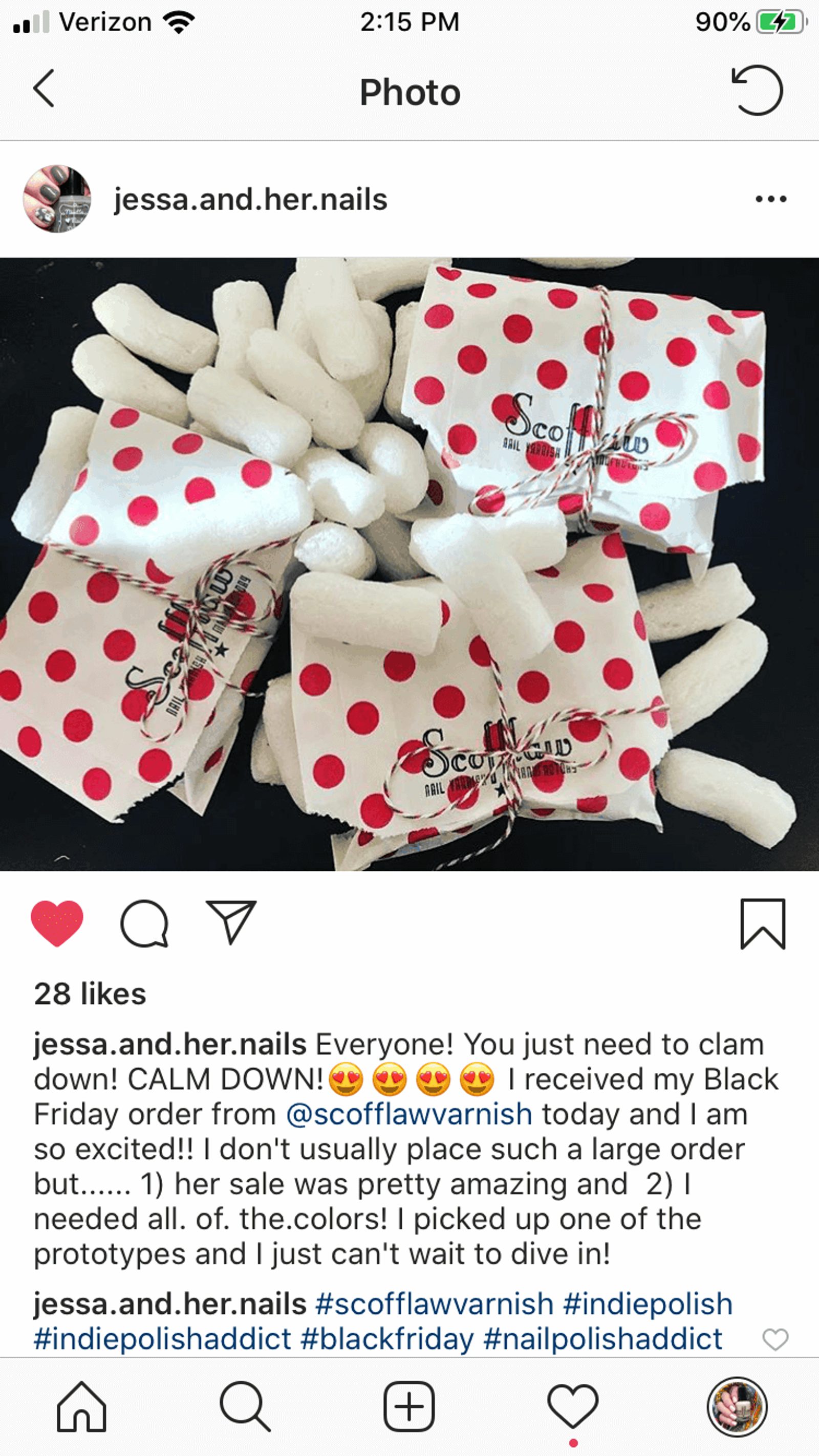
Scofflaw customers show off their purchases on social media because they love the products — not because Finch tells (or pays) them to.
What does the research say?
At the end of the day, people buy what they see other people buy (and get excited about!).
What inspires people to start researching a product? Here’s what our ecommerce research found:
- Social Media Ad (23%)
- Product Mentioned in an Article (21%)
- TV Ad (15%)
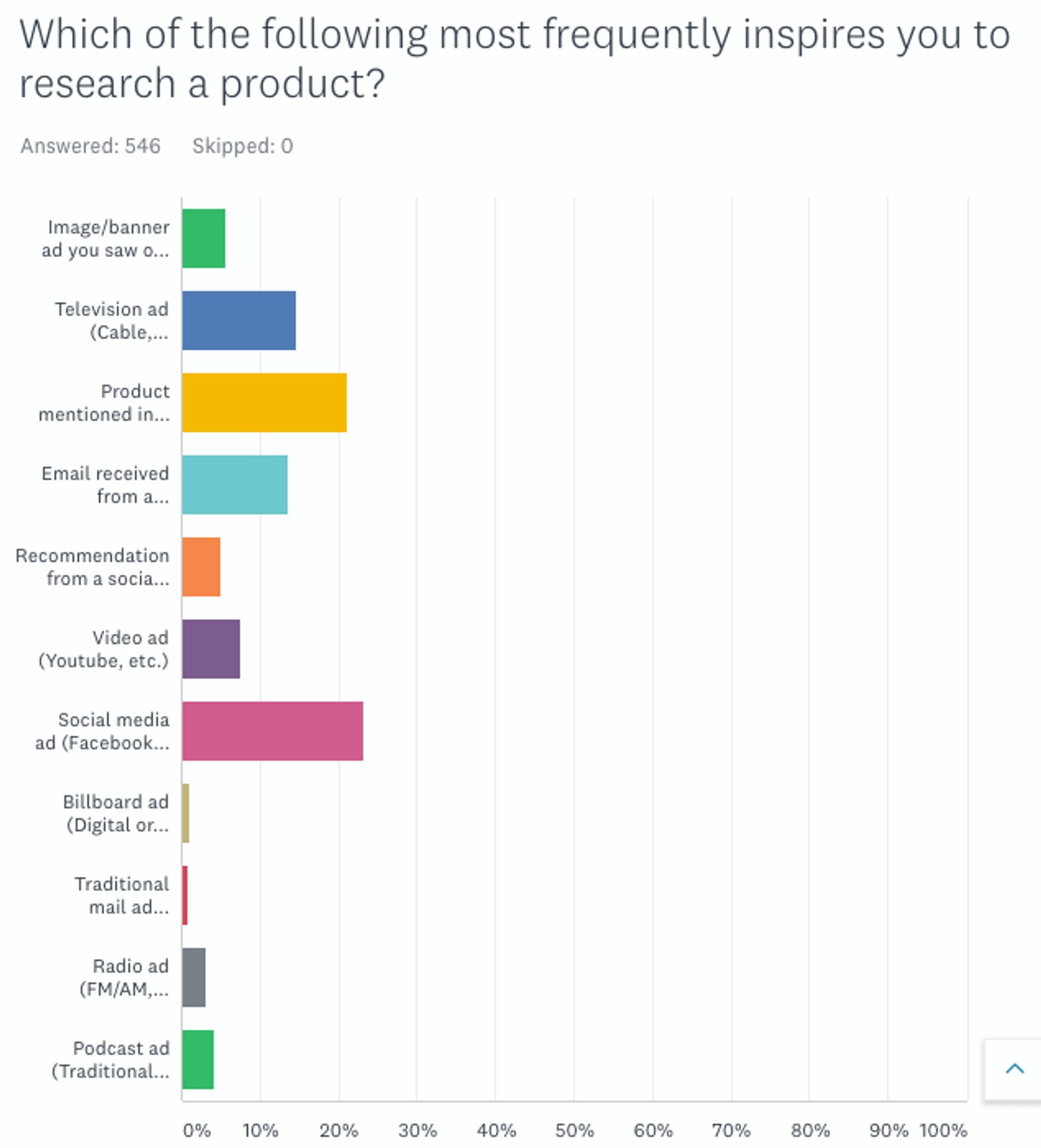
We already covered social media ads as a driver of product discovery — and the research backs that technique up. (Learn more about this ecommerce research here.)
The third result might be surprising: TV ads. The effectiveness of TV ads changes depending on demographics; more people over age 45 stated that TV ads influence them. People under 45 are far more likely to be influenced by someone they follow on social media.
Find out which channels your audience looks to for shopping influence and inspiration — and make sure you show up there.
How to recover abandoned cart revenue
Over 75% of people abandon their shopping carts online. In your ecommerce store, 3 out of every 4 people who add something to their cart leave without paying you.
Why do people abandon shopping carts?
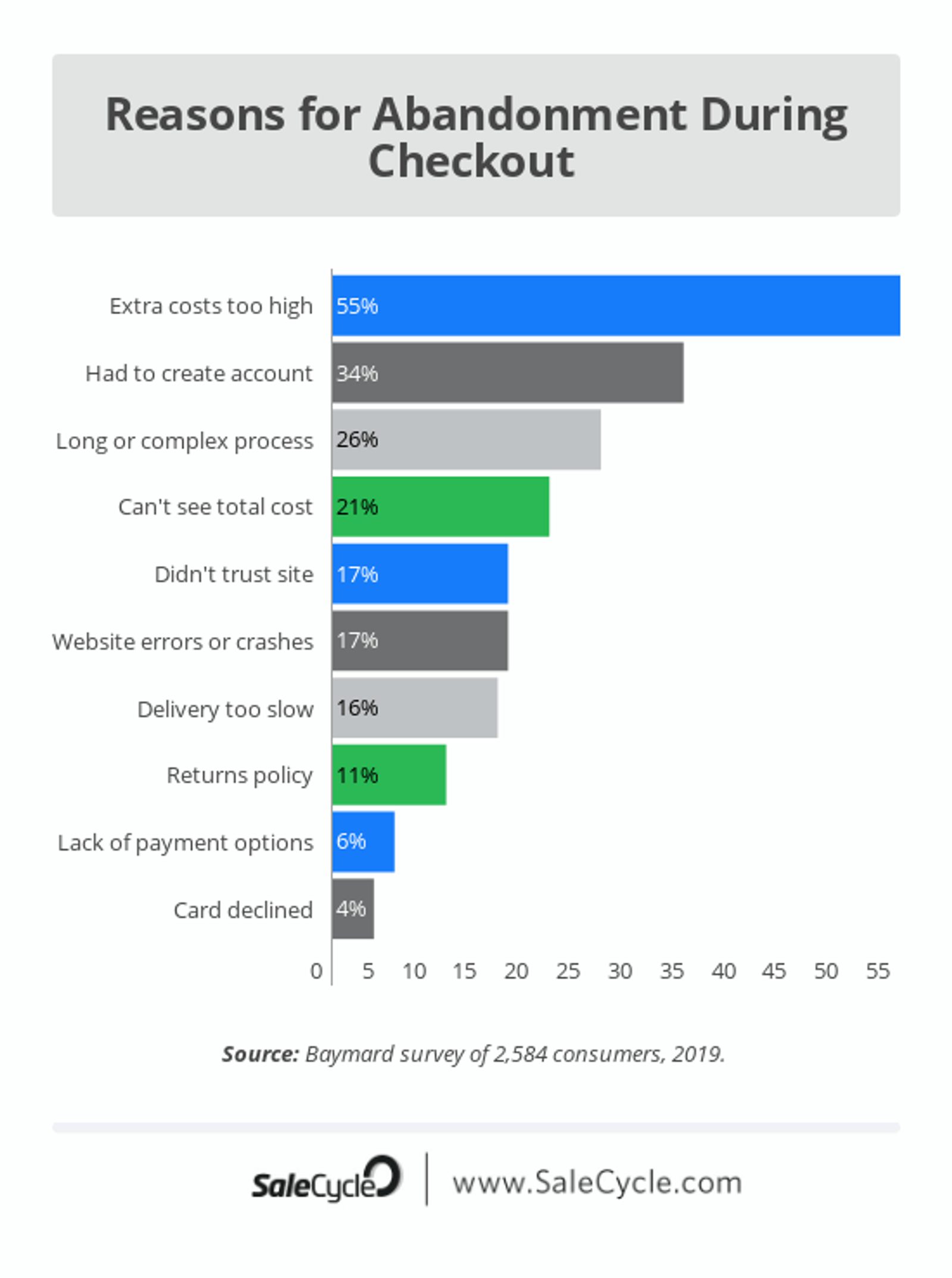
This research from Baymard shows the top reasons shoppers abandon their ecommerce carts. (Image source: SaleCycle)
And where do they go after they abandon them?
Some people leave your site, but others may click off to different pages. Andy Crestodina, co-founder of Orbit Media, recommends you track where people navigate to on your site after leaving the shopping cart.
If they navigate to a page on your site that you track in Google Analytics, you can track that — as long as you have a custom funnel set up in your Google Analytics goals:
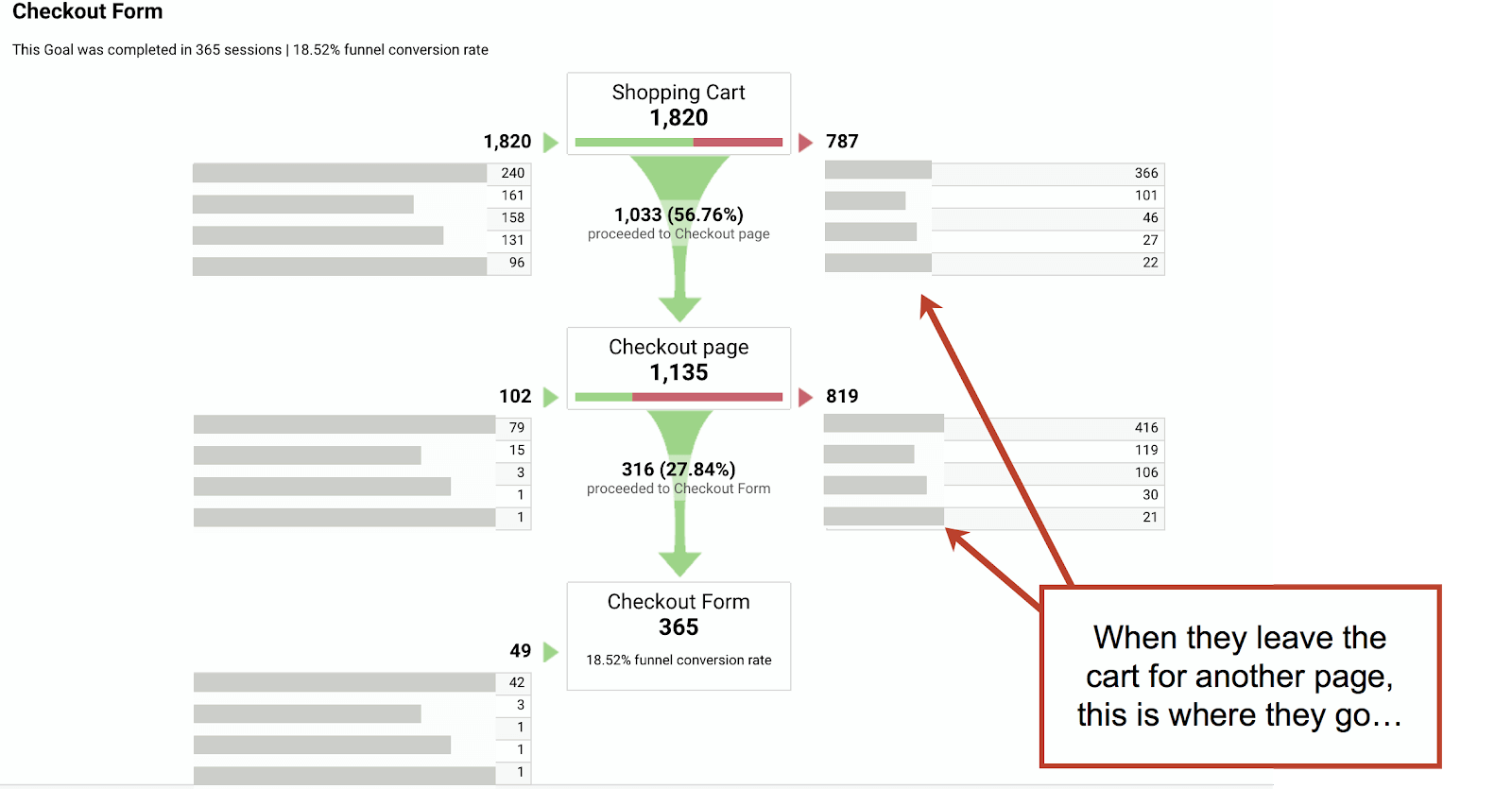
A funnel visualization report shows you what percentage of people made it through each step. If they didn’t proceed to the next step in the funnel, this report shows you what page on your site they went to instead.
When you track where people click instead of completing a purchase, you can figure out what information is missing from your checkout page.
Do shoppers leave your page in search of a promo code? Do they have questions about privacy or shipping? This report can help you come up with copy additions to your checkout that can reduce cart abandonment.
If shoppers get to the checkout and have a question about returns, they might click off the page to view your return policies. The fix? Add a short sentence about returns to your checkout page to maximize your conversion rate and reduce drop-offs.
Abandoned cart emails: Re-engage customers and recover revenue
Abandoned cart emails have an open rate of 45%. On average, they convert 1 out of every 10 abandoned carts into sales.
Scofflaw Nail Varnish sees about 2 out of every 10 abandoned carts recovered via abandoned cart emails. That's like free money!
Abandoned cart emails are easy to set up in a marketing automation platform — and once you set them up, they work in the background. You can set it and forget it.
Use your abandoned cart emails to remind people why they put your product in their cart in the first place.
Morrow Audio uses ActiveCampaign to send a series of 2 abandoned cart emails to shoppers. The results?
- A 26% conversion rate (almost 3x the average)
- Recovered $30,000(!) via an automated series of two abandoned cart emails
A series of 2 or 3 abandoned cart emails can work better than just 1. You can use an email to let customers know that a certain item is low in stock or to trigger some FOMO (fear of missing out).
People care more about what they might lose as what they will gain. This is called loss aversion: the psychological phenomenon in which people prefer avoiding losses to acquiring gains. Learn more about when and how to use loss aversion in your marketing in this post.
Expert Insight: Andy Crestodina, Chief Marketing Officer and Co-Founder at Orbit Media, on how content can recover abandoned carts

“Just a piece of content can help them make a buying decision. That's the difference between content marketing and advertising: The goal of content marketing is to help them make a buying decision. Not to sell directly, but to help them make a decision. That is something that I think a lot of ecommerce sites are still missing.
As mentioned, product mentions in articles is one of the top reasons that people research. It gives them a reason to research something that they maybe weren't even thinking about in the first place.
A similar piece of content: Gift guides. And speaking of influencer marketing, if you know an influencer who has published a gift guide in the past, making friends with them in the weeks before Black Friday is how you end up at the top of a list of best gifts.
There's no magic to it. It's about building relationships with bloggers, editors, columnists, anybody who writes for these publications. Those things often have huge visibility. If you can get in at the right time, you're going to get at the top of that list, or at least on it.”
What does the research say?
What makes people go back to purchase something they previously researched?
- Product Mentioned in an Article (28%)
- Social Media Ad (16%)
- Email from Brand (15%)
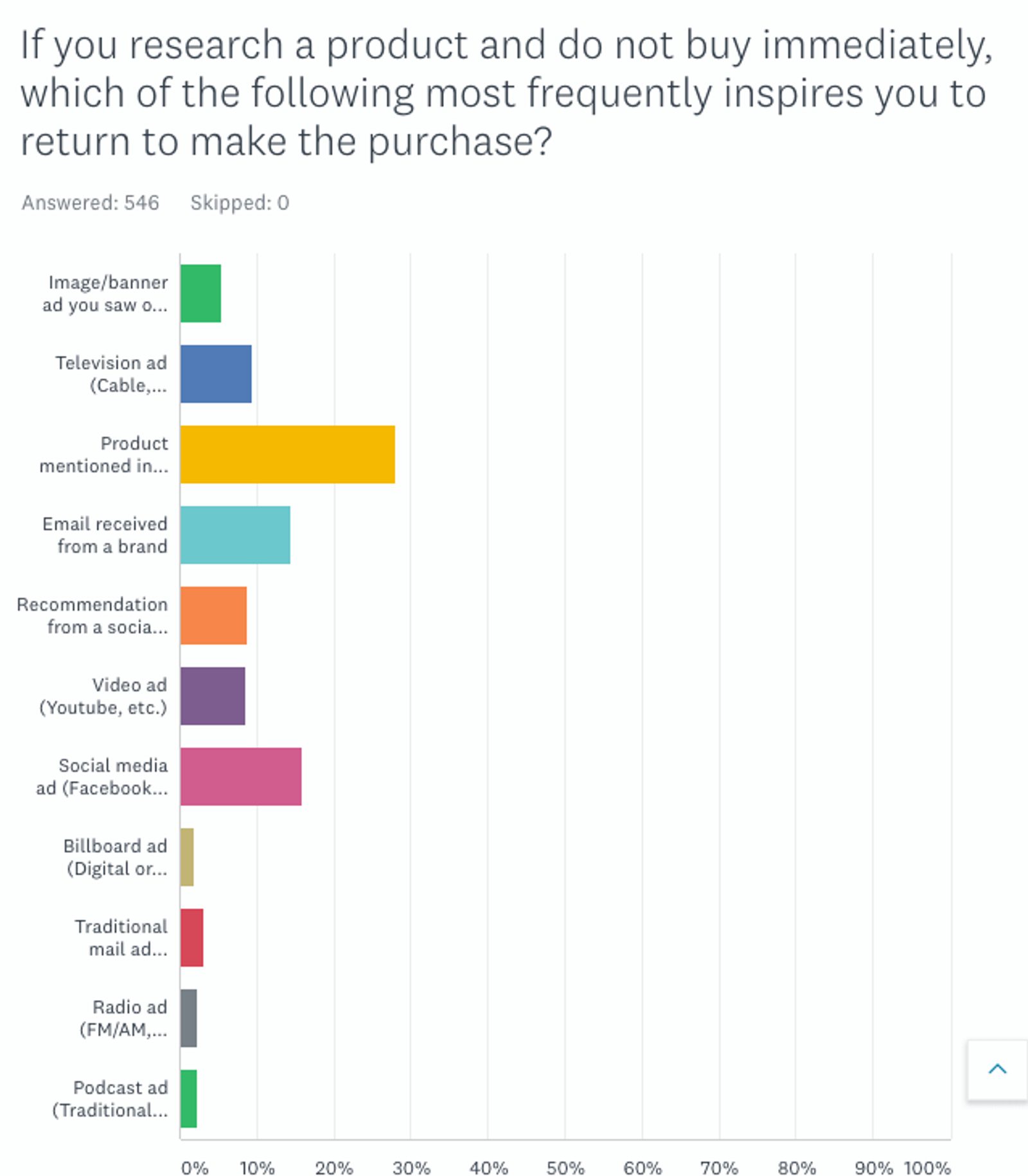
At this point in the customer journey, third parties seem more credible than a brand that’s advertising itself. (Learn more about this ecommerce research here.)
Third-party content — like the influencer gift guides we mentioned above — inspires purchases. Social media retargeting can also bring customers back to your ecommerce store to complete their purchase.
Done right, personalized abandoned cart emails work, too — and have an average ROI of $38 for each $1 spent.
How to keep customers coming back after their first purchase
How do you turn a 1-time customer into a repeat customer? What makes someone purchase from you a second or third time?
Use email marketing to drive repeat purchases
Email marketing is Scofflaw Nail Varnish’s number one driver of repeat purchases.
“When people sign up for your email list, you ask them to start a new habit: to interact with your brand. So once on my list, subscribers are engaged,” explains Finch. “To keep customers engaged through email, you have to email customers content they want to get. And you have to have calls-to-action that they want to act on.”
Here’s one of Finch’s top-performing emails:
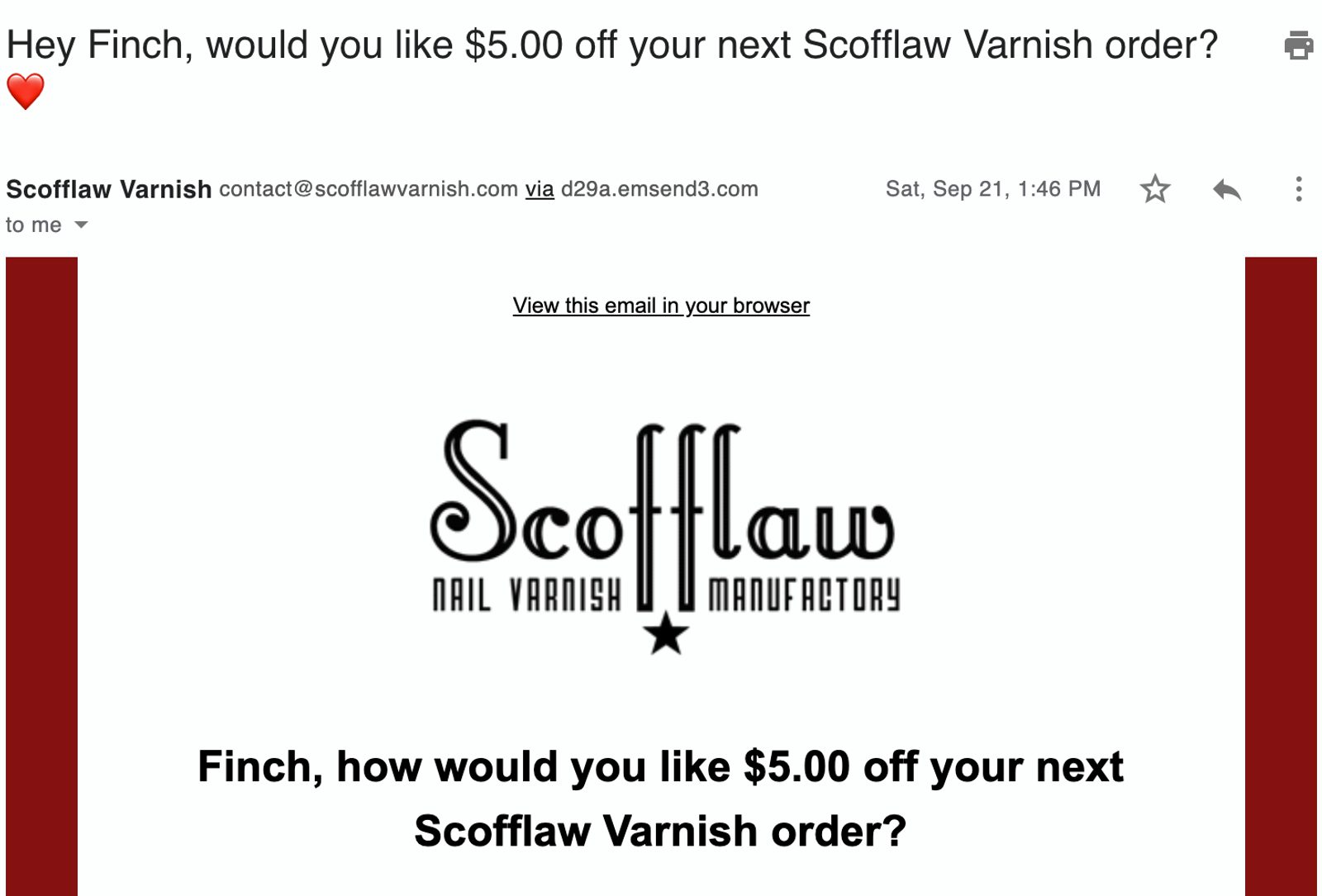
Use your customer’s name in the subject line and body of the email to grab their attention and make your message feel more personal. Bonus: Subject lines with emojis can lead to a 56% higher open rate.
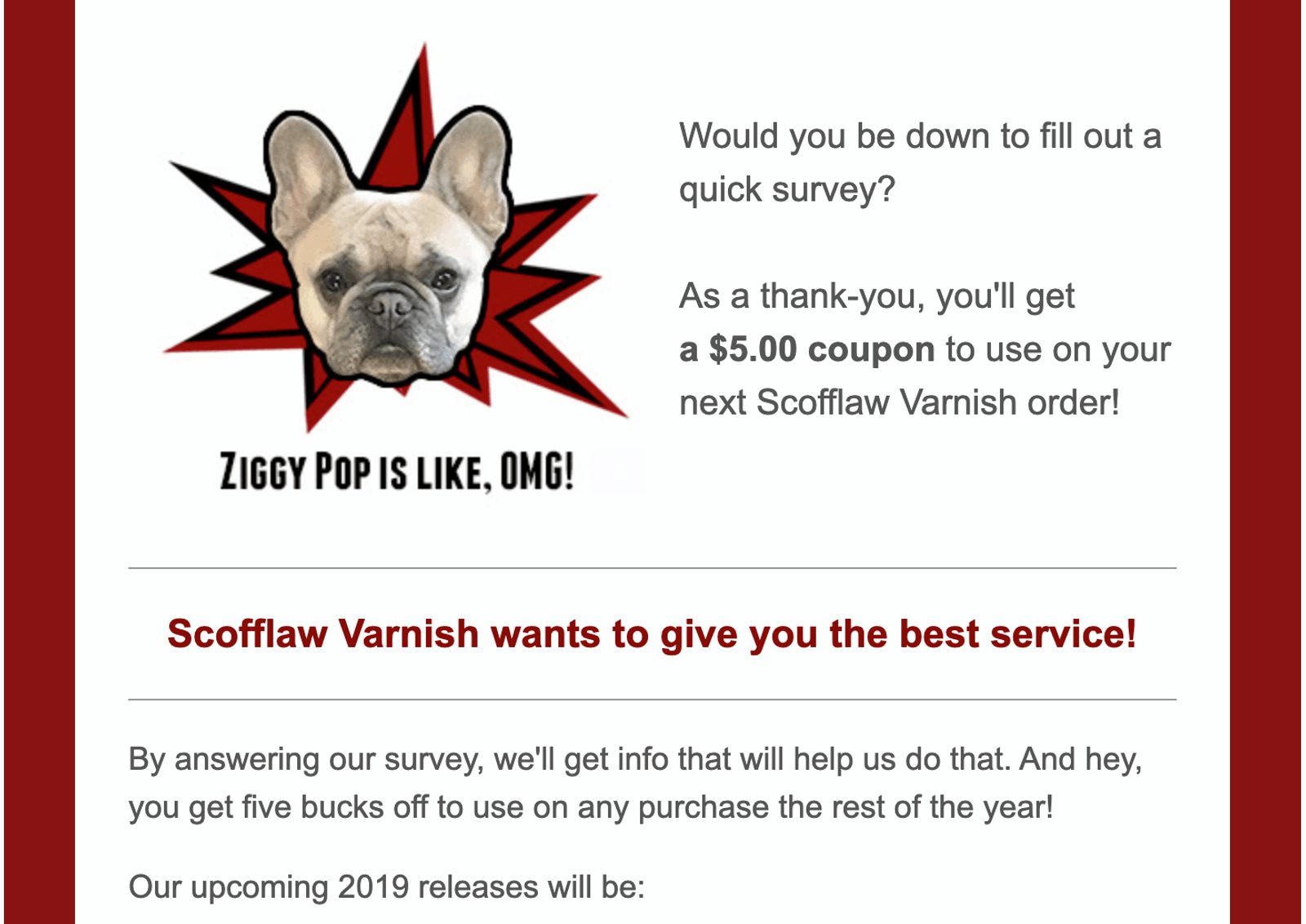
“Never underestimate the power of cuteness,” says Finch. “If you have a product that doesn't lend itself to people's faces, find other ways to humanize your brand. Ziggy Pop appears on my order confirmation page, my shipping update email, and my social media feed. My customers know him.”
Over 40% of Scofflaw’s email list not only opened the email, but clicked through and took action. The survey included in the email does 3 things:
- Gives customers something of value: A (very rare) discount. “I almost never have sales. My only sale is Black Friday, and I never give coupons,” says Finch. “My list knows this, and that makes the customers that got this email feel like they're part of a special club.”
- Makes customers feel heard. “Marketing isn't about our story. It's about our customers’ story. And a survey lets them help write that story.”
- Gathers valuable information. The survey lets Finch’s customers tell her what they really want. “I asked a series of 10 questions. How often do you buy? What's your favorite polish color? I gave them multiple options on days and times for releases to drop and asked which they would prefer. I asked how they prefer to get information through Facebook, Instagram or email.” The information gathered through this survey helps Finch provide a better customer experience.
What does the research say?
What makes people come back and buy from a brand again?
- Email from Brand (28%)
- Product Mentioned in an Article (18%)
- Social Media Ad (14%)

Creating repeat buyers is where email marketing shines. Emails allow brands to target and engage customers on a personal level. (Learn more about this ecommerce research here.)
Why do emails from brands have so much more influence during this stage of the customer journey vs. earlier on? We have 2 hypotheses:
- You have the customer’s email address, which you might not have had before they purchased. Now, it’s easier to follow up with them
- People open emails from senders that they recognize. If a customer has purchased from a brand before and recognizes the brand name, they are much more likely to open the email.
Product mentions in articles and social media ads are other valuable ways to encourage repeat customers. With social media ads, retargeting is an effective way to get existing customers to come back and purchase again.
Conclusion: How people decide to buy
Different forms of media and marketing influence buyers differently throughout the buyers’ journey.
Paid social media ads are an effective way to get your product in front of new audiences. Social media lets you target people based on a variety of factors. The more targeted your audience is, the cheaper and more efficient the ad because you’re telling the platform exactly who to advertise to.
This means you can start with a much smaller budget, making it a really strong first step for a lot of ecommerce stores.
If someone comes to your site, adds a product to their cart, then leaves without checking out, don’t let them walk away forever! Abandoned carts don’t mean defeat. Abandoned cart emails and social media ads can pull people back in and remind them why they wanted your product in the first place.
Finally, use email outreach to re-engage customers after their first purchase (or second, or third) and have them coming back for more. Personalized emails and product recommendations go a long way to build brand loyalty and reconnect with customers.









